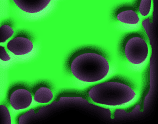Theme
When building a deck, the first step is to think of a theme for that deck. Each color has their own ideas for a theme and some others come when you mix the colors. White had weenie, life gain, or protection. Blue has counter, flying, or, in general, control. Black has death, discard, and creature rush. Red has haste or burn. Green has, mainly, the big, stompy, beefy creatures that we all know and love. Remember, these are just samples of decks. There are so many more combinations of strategies to use when creating a deck. The possibilities are endless. Think of how you will kill your opponent. Will you be using spells in a burn deck? Or what about creatures? This is very important to think about when creating your deck. Also, think of strategies. If you have burn, do you want walls or creatures to block? Or can you just burn their creatures before they hit you? These questions will help you to figure out some information about the next topic.
Color
Think of your theme and think of what colors you can use to help it. If you want fast creatures, you can think black. However, white and red also have some small creatures that you can use. If you want burn, go for red. However, blue has cards like Prodigal Sorcerer that you can use to "Tim" an opponent. Think about your theme and decide which colors will fit it best.
Lands
The amount of land you need varies with the color and theme of your deck. If you have a deck that is 3/4 green and 1/4 white, you don't want an equal number of forests and plains. Burn decks won't need as many lands as a Dragon deck will. My equation that I use for determining my base number of lands is the basic equation for a 60 card deck with 35 spells and 25 lands. L=(5/7)*S where L is the number of lands in the deck and S is the number of spells.
Creatures
Your theme may require you to have a buttload of creatures, or maybe none at all. If you have a black rush deck, you will need many creatures to overrun the enemy. If you are using blue control, you don't want many creatures at all. Also, look at the mana cost of a creature. A 6/4 green wurm may look pretty cool to put into your deck at first, but look at the upper right hand corner. Six mana is a little steep for a creature that has no abilities other than its strength. Go for the cheaper creatures that have some ability to help you.
Non-Creature Spells
These are important depending on what type of deck you have. Just like green decks will probably have a lot of creatures and blue decks will probably have more non-creature spells. Of course, you will also want non-creature spells in a creature deck. In green, Giant Growth can help you deal more damage by making creatures stronger. White weenie could also use life gain or other ideas (I suggest a few Disenchants for every white deck, and now Naturalization for green). Black should always include some creature destruction or discard. And, I have to say it, put some burn in the red. Non-creature spells are as important as creature spells when building your deck.
Artifacts and Enchantments
This is why you need the Disenchants. Artifacts help in many different ways, but they should be limited unless you have an artifact deck. Artifact creatures also are good because they can be used in any color deck. They, however, are targetable by many destroy artifact cards. Enchantments are part two of this section. Some enchantments can help you make your creatures larger, make other creatures smaller, destroy things, or make the game fun. Some Enchantments can even help you win the game. These however are only good in decks that are based around them.
Testing
Play the deck. Use it against your friends. Use it against your family. Use it to brush your hair. Just use the deck and study it until you find what is wrong. Then make it better. Add new cards. Remove old ones. Tweak it until it is the ultimate fighting machine.
And hey. Let's be carful out there.

